From the early footprints to the European settlements, historical places in Canada reveal a layered story of trade, exploration and transformation. These sites are more than preserved buildings or ruins, they are windows into the past. Here you can walk through former battlefields, ancient trading routes, and once-bustling colonial towns. Each location carries its own narrative, shaped by local heritage and national events. These places offer travellers a chance to experience history in its raw and unforgettable form.
Top 10 Historical Places In Canada
Here are the famous historical places in Canada that hold real stories etched into stone, timber, and land, reflecting Canada’s cultural roots:
1. Fortress Of Louisbourg, Nova Scotia
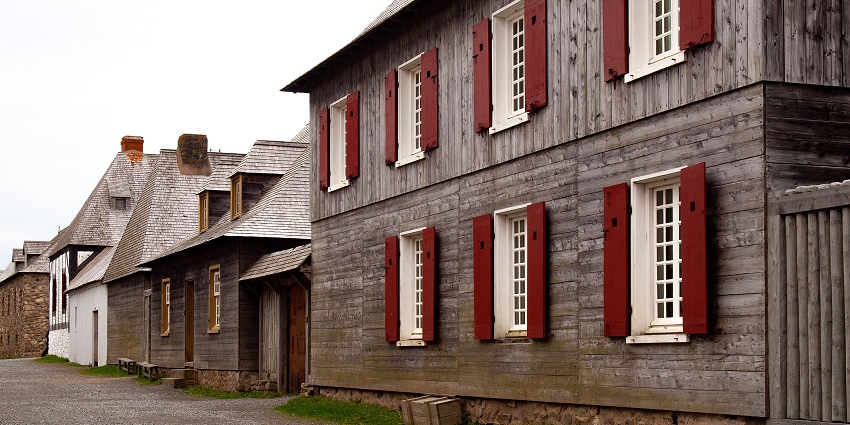
Photo: KenCLeBlanc / Wikimedia Commons
Fortress of Louisbourg was built by the French in the early 18th century as a defensive base on the Atlantic coast. Positioned on Cape Breton Island, it served as a busy harbour and an important military outpost. The scale is impressive, with thick stone walls, watchtowers, soldiers’ quarters, and a chapel. Inside, daily life includes bread baked in old ovens, soldiers patroling the grounds, and tradesmen working in period clothing. The site offers a direct look at the colonial rivalry that shaped eastern Canada.
Timings: 9:30 AM – 5 PM
Nearby Attractions: Cape Breton Highlands, Louisbourg Lighthouse Trail
2. Old Quebec (Vieux-Québec), Quebec City
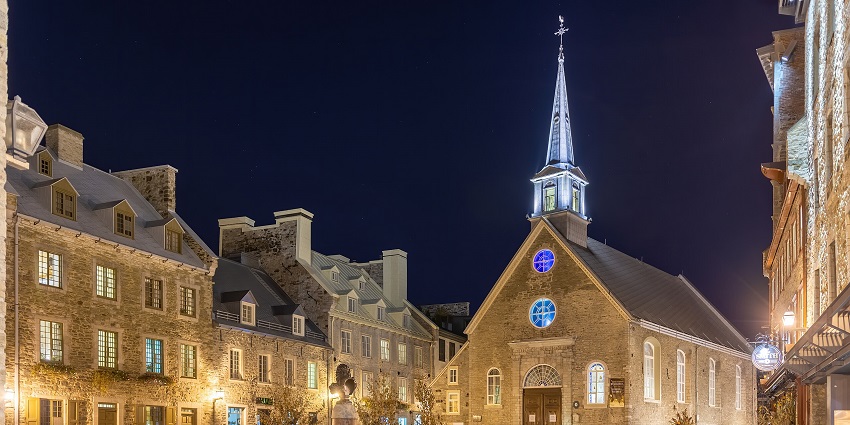
Photo: Wilfredo Rafael Rodriguez Hernandez / Wikimedia Commons
Old Quebec is the oldest walled city in North America and the heart of French heritage in Canada. The area is divided into Upper Town and Lower Town, with cobbled streets, stone buildings, and centuries-old churches. Sites like the Ursuline Monastery and Notre-Dame-des-Victoires Church stand as reminders of the city’s religious and colonial past. The city walls, cannons, and fortified gates were once used to defend against attacks and remain intact today. In 1985, it was recognised as a UNESCO World Heritage Site for its outstanding preservation of colonial architecture and history.
Timings: Open year-round
Nearby Attractions: Château Frontenac, Citadelle of Québec, Terrasse Dufferin
3. L’Anse Aux Meadows, Newfoundland And Labrador
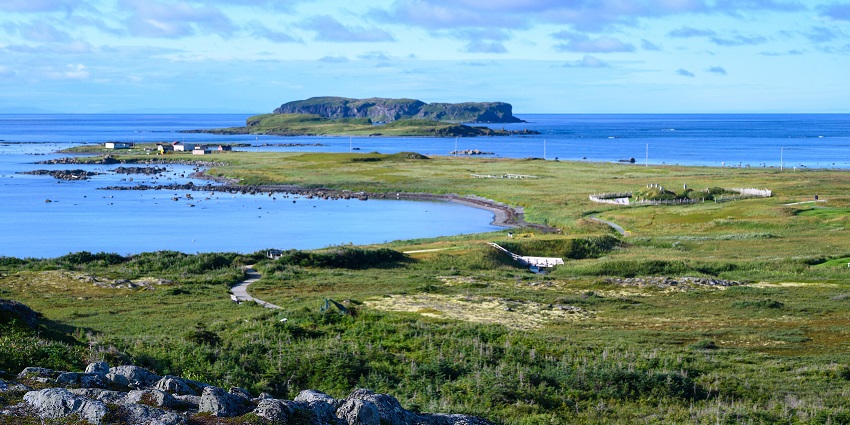
Photo: Gordon Leggett / Wikimedia Commons
L’Anse aux Meadows is the only known Viking settlement in North America, built over a thousand years ago. It stands at the northern tip of Newfoundland’s Great Northern Peninsula. The remains include timber-framed turf buildings believed to have housed Norse seafarers. The location fits the description of “Vinland” from the Norse sagas. It offers a rare and direct link to the earliest European presence on the continent, centuries before Columbus. The reconstructed longhouse and blacksmith’s hut give visitors a clear view of how the Norse lived and worked during their time in the region.
Timings: 9 AM – 5 PM
Nearby Attractions: Norstead Viking Village, Fishing Point Municipal Park
4. Fort Henry, Ontario
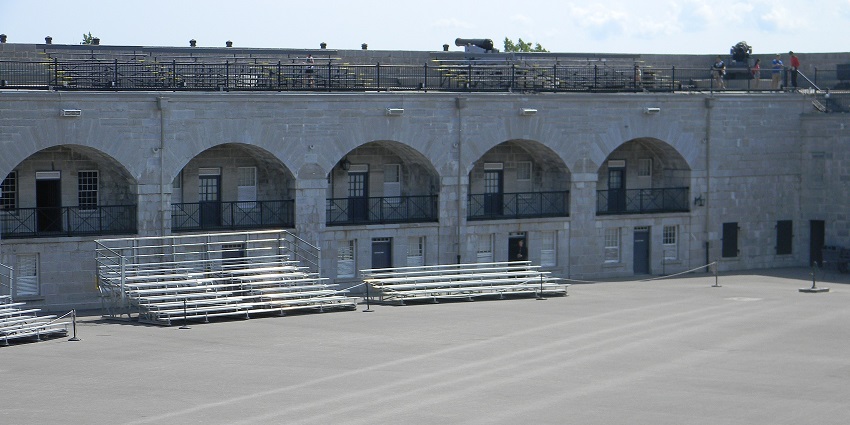
Photo: Laslovarga / Wikimedia Commons
Fort Henry was constructed during the War of 1812 to defend the naval dockyard at Kingston. It served as a military post for British and later Canadian troops and also held prisoners during both World Wars. The layout includes thick walls, dry moats, guard rooms, and underground chambers. Its position overlooking the Cataraqui River made it a key site in British defence strategy. The fort is preserved as a national historic site and offers guided tours, military demonstrations of 19th-century garrison life. Such historical places in Canada are also used for seasonal events, including evening ceremonies and parades.
Timings: 10 AM – 5 PM
Nearby Attractions: Kingston Penitentiary Tours, Royal Military College Museum
5. Batoche National Historic Site, Saskatchewan
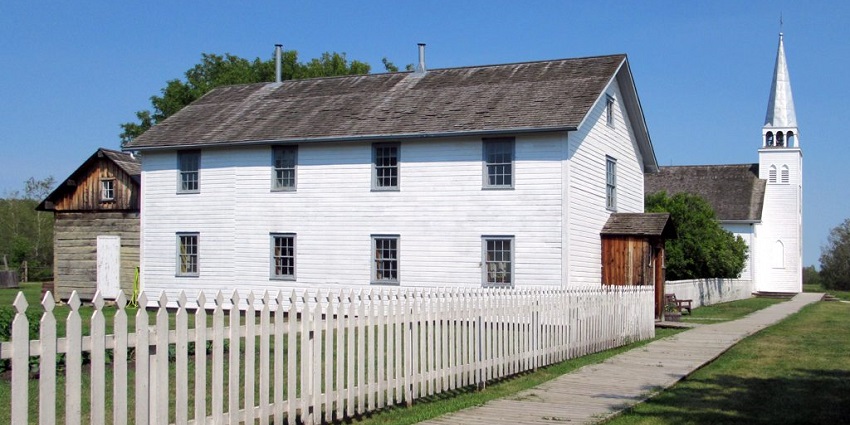
Photo: David Stanley / Wikimedia Commons
Batoche was the centre of the 1885 North-West Resistance, led by Métis political leader Louis Riel. Set beside the South Saskatchewan River, it became the site of the final clash between the Métis and government troops. Several structures still stand, including the church, rectory, and the remains of rifle pits used in battle. The site also honours Gabriel Dumont, who commanded the Métis fighters. Walking trails and displays around the area help explain what happened during the uprising.
Timings: 9 AM – 5 PM
Nearby Attractions: St. Laurent Shrine, Gabriel’s Crossing
6. Citadel Hill (Halifax Citadel), Nova Scotia
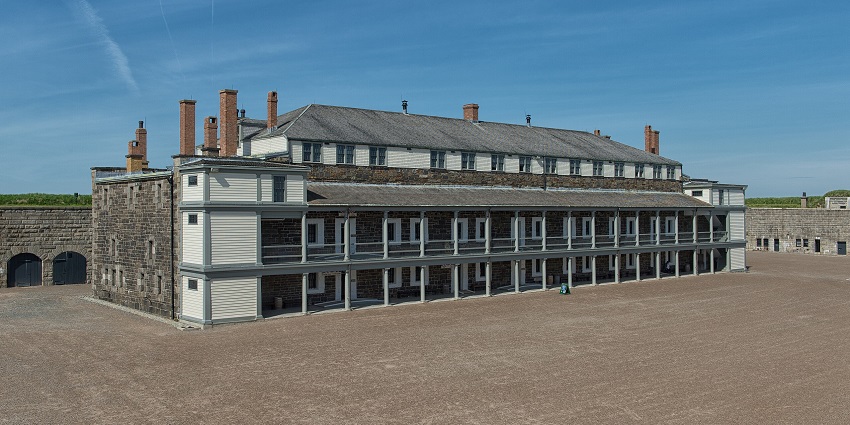
Photo: Markus Gregory / Wikimedia Commons
Citadel Hill was built to defend Halifax’s harbour, a key military and shipping centre for the British. The fort which is now shaped like a star, was completed in 1856 and replaced earlier structures from the 18th century. It used to serve as a command post, storage area, and living quarters for soldiers. Its height allowed defenders to spot incoming ships and respond quickly to threats. The dry ditch and sloped walls were designed to slow down attackers. During both World Wars, it was used again for coastal defence. Today, the site is open to the public.
Timings: 9 AM – 5 PM (seasonal hours vary)
Nearby Attractions: Public Gardens, Maritime Museum of the Atlantic
7. Head Smashed In Buffalo Jump, Alberta
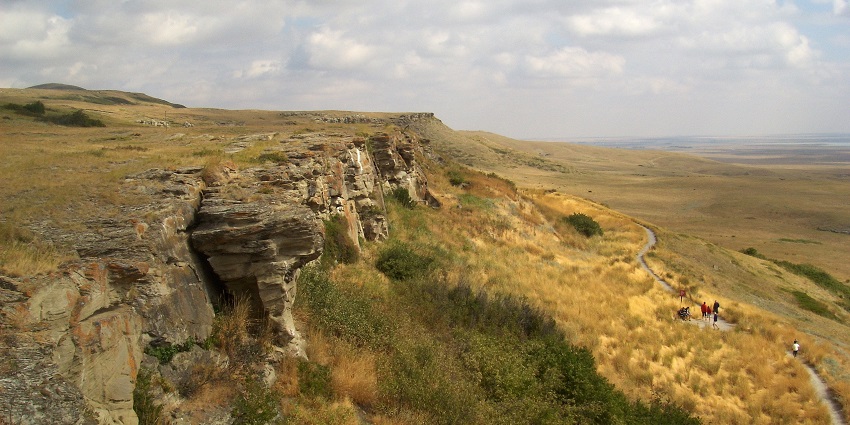
Photo: XeresNelro / Wikimedia Commons
Head-Smashed-In Buffalo Jump is one of the oldest and best-preserved hunting sites used by the Plains Indigenous peoples for nearly 6,000 years. Located in the foothills of the Rocky Mountains, this cliff was used to drive herds of bison over the edge during organised hunts. Bones, tools, and camp remains found below the jump reveal how communities worked together to provide food, clothing, and shelter. The site reflects the depth of Indigenous knowledge in tracking, terrain use, and social organisation. In 1981, UNESCO recognised the site for its cultural and historical significance.
Timings: 10 AM – 5 PM
Nearby Attractions: Fort Museum of the NWMP, Waterton Lakes National Park
8. Rideau Canal, Ontario
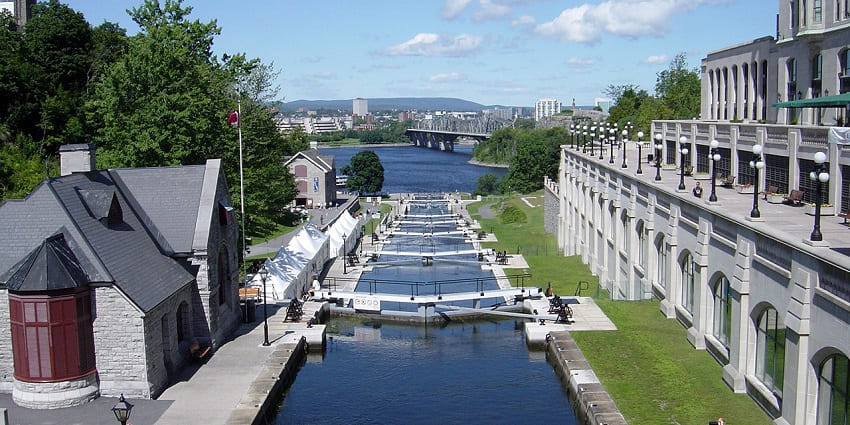
Photo: Bobak Ha’Eri / Wikimedia Commons
Rideau Canal offers far more than a glimpse into Canada’s military past. It’s a living part of Ottawa’s daily rhythm. You can walk beside the original stone locks, watch boats pass through hand-cranked gates, or cycle along the tree-lined banks. In winter, a large stretch of the canal turns into the world’s longest skating rink, a local tradition unlike any other. For those visiting, this site is not just a historical landmark but a seasonal experience. Canoe trips in summer, warm drinks by the frozen water in winter and the canal’s peaceful flow attracts tourists.
Timings: Open year-round; canal skating from January to February
Nearby Attractions: Parliament Hill, Bytown Museum
9. Barkerville Historic Town, British Columbia
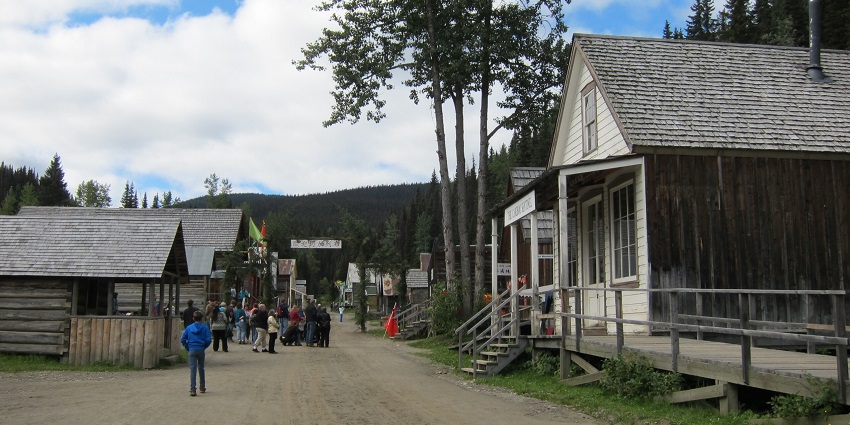
Photo: Mike / Wikimedia Commons
Barkerville was founded in 1862 after Billy Barker discovered gold in the Cariboo region. What began as a scattered camp turned into the largest town in British Columbia’s interior almost overnight. Over time, it became known for its busy main street, Chinese businesses, and public institutions. Currently, more than 125 of its original wooden buildings are still standing. You can walk along raised boardwalks, step inside working shops and homes, and take part in activities. Barkerville is preserved as a heritage site among other historical places in Canada.
Timings: 8 AM – 6 PM
Nearby Attractions: Cottonwood House Historic Site, Bowron Lake Provincial Park
10. The Forks, Manitoba
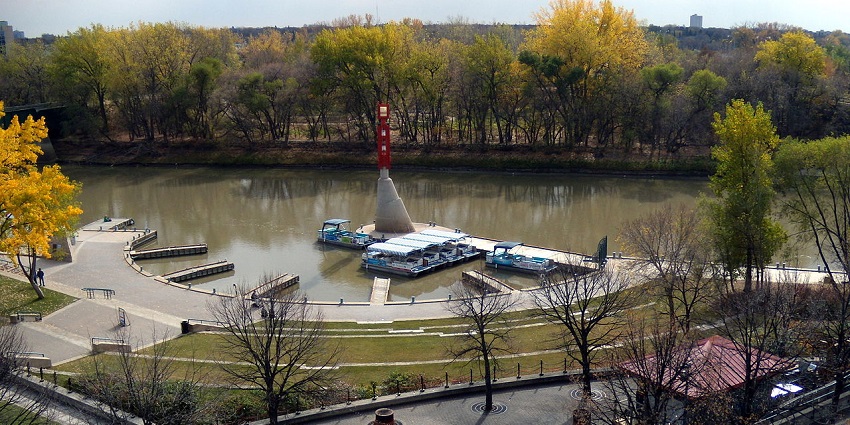
Photo: Ccyyrree / Wikimedia Commons
For thousands of years, Indigenous peoples came here to meet, trade goods, and prepare for seasonal movement. In the 1700s, fur traders began using the same land, building posts and camps near the banks. By the 19th century, rail lines arrived and The Forks became a working rail yard, changing the landscape once again. Some of the old brick warehouses still stand and have been restored as part of today’s public space. Visitors can walk the riverfront trails, explore the indoor market, and visit small museums that explain each period of the site’s history.
Timings: Open year-round
Nearby Attractions: Canadian Museum for Human Rights, Esplanade Riel
These historical places in Canada are more than preserved buildings or marked land. They hold the weight of early settlements, treaties, uprisings, and turning points that shaped the country. Every site offers something different, some are quiet and remote, others alive with daily activity. Whether you walk through the remains of a fort or stand where a gold rush town once thrived, you leave with more than just photos. For a trip through Canada, plan with TripXL
Cover Photo: Wilfredo Rafael Rodriguez Hernandez / Wikimedia Commons


 WhatsApp
WhatsApp
 Twitter
Twitter









